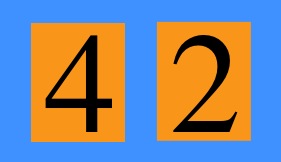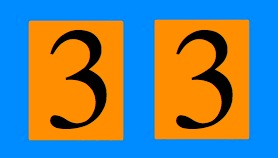Copyright © University of Cambridge. All rights reserved.
Half Time
Half Time printable sheet

When Spain played Belgium in the preliminary round of the men's hockey competition in the 2008 Olympics, the final score was 4 - 2.
What could the half time score have been?
Can you find all the possible half time scores?
How will you make sure you don't miss any out?
In the final of the men's hockey in the 2000 Olympics, the Netherlands played Korea. The final score was a draw: it was 3 - 3 and they had to take penalties.
Can you find all the possible half time scores for this match?
Why do this problem?
This challenge invites pupils to develop a systematic way of working and offers the opportunity for discussion in pairs, small groups and the whole class. For some learners, having a 'real' context might provide motivation to solve the problem.
Possible approach
Of course, you may wish to introduce this problem in the context of the scores of a local event, rather than the Olympics. This may help many pupils engage in the solving of the problem.
Whatever the context, at first you could invite pupils to guess what the half time score was to the match. Take a few suggestions and then ask them to try and find all the possibilities. Give time for pupils to work in pairs on the task and look out for those children who are beginning to work in a systematic way.
After a suitable length of time, draw the whole group together and ask them how they are making sure they don't miss out any possibilities. You may wish to ask certain pairs to share their ways of working with the whole group. It might be handy to suggest that each different possibility is written on a separate strip of paper as this might aid later discussions.
Give them longer to work on the problem then bring everyone together once more to discuss findings. You could ask each pair how many different possible scores they think there are - they are unlikely to agree! This is where having the scores written on strips is useful as you can stick them on the board, or ask members of the class to hold them, then invite everyone to sort them
or re-order them. In this way, a system is imposed on the scores and any missing ones can be identified quickly.
You can then challenge pairs to find the possibilities for the $3 - 3$ match, using a similar system. The experience of working on the $4 - 2$ result all together should give them more confidence to tackle the second match in their pairs.
Key questions
How do you know that may have been a half time score?
How can you be sure that you have found ALL the possible half time scores?
Suppose the final score was a draw, what then?
Possible extension
You could ask "If there are $24$ possible different half time scores, what could the final score have been?".
Possible support
Some pupils may prefer to start with games where there are fewer goals, for example, 0 - 1, 1 - 0, 1 - 1 etc so that there are fewer possible half time scores.


